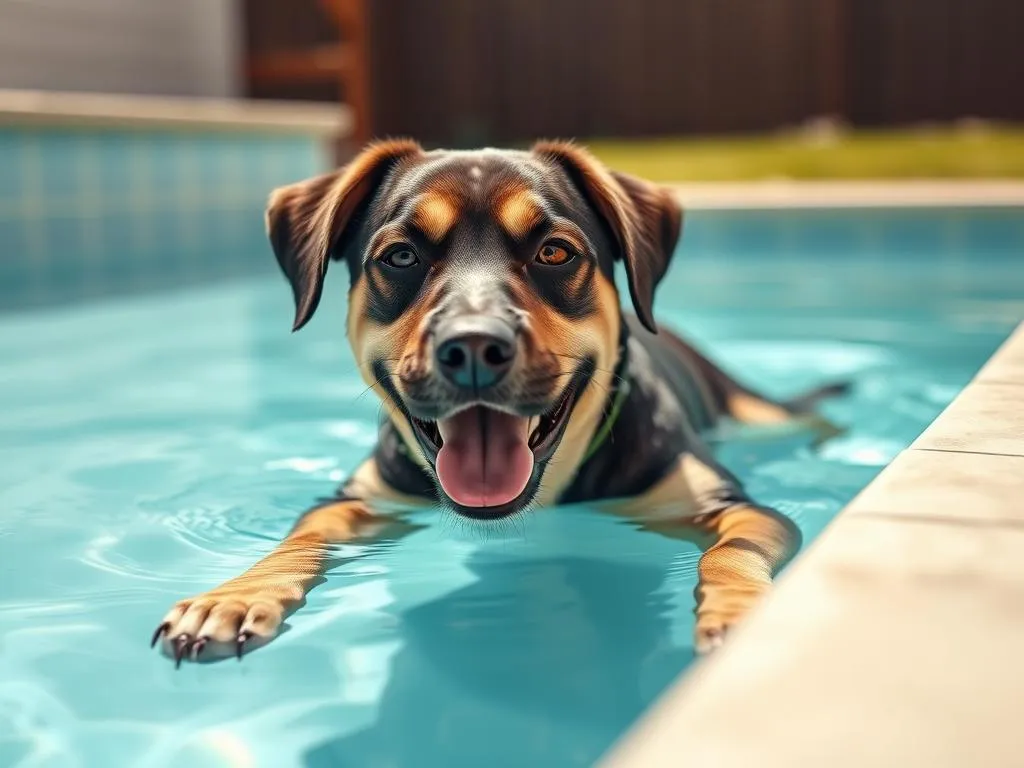
Introduction
As summer approaches and swimming pools become a staple of outdoor fun, many dog owners ponder a specific question: do dogs pee in the pool? Understanding dog behavior in relation to swimming and urination is vital for pet owners who want to create a safe and enjoyable environment for both their furry friends and themselves. This article delves into the intricacies of dog behavior, the science behind urination, and practical strategies to manage and prevent unwanted accidents in swimming pools.
Understanding Dog Behavior
Basic Canine Instincts
Dogs are animals driven by instinct, and understanding these instincts is crucial to addressing their behavior. One primary instinct is territorial marking. Dogs communicate with each other through scent, and urination serves as a way to mark their territory. This behavior can sometimes extend to new or unusual environments, such as pools, where the dog may feel inclined to leave their scent.
The Role of Environment
The environment plays a significant role in shaping a dog’s behavior. Dogs often exhibit different behaviors indoors versus outdoors. For instance, a dog may feel more relaxed and relieved outdoors, whereas indoor environments might lead to anxiety if they are confined or lack familiar scents. When a dog is introduced to the water of a pool, the new environment can elicit various reactions, including the possibility of urination.
The Impact of Training
Training can significantly influence a dog’s behavior, especially when it comes to urination. Dogs that have undergone consistent potty training are generally less likely to urinate in inappropriate places, including pools. Techniques such as positive reinforcement can be effective in encouraging desired behaviors. Understanding a dog’s need for regular bathroom breaks can also help reduce the likelihood of accidents.
The Science Behind Urination in Dogs
Why Do Dogs Urinate?
There are several reasons why dogs urinate, both biological and emotional. Biologically, urination is a natural process for expelling waste from their bodies. However, emotional factors can also play a role. Dogs may urinate out of excitement, anxiety, or submission when faced with new experiences, such as swimming in a pool.
Dog’s Urinary System
A dog’s urinary system consists of the kidneys, ureters, bladder, and urethra, working together to filter blood and produce urine. Understanding the anatomy and function of this system can help pet owners appreciate the complexities behind a dog’s urination habits. When a dog is active, especially in a stimulating environment like a pool, their need to urinate may increase.
Hydration and Its Effects
Hydration levels can have a significant impact on a dog’s urination habits. Dogs that are well-hydrated are more likely to need to relieve themselves. Additionally, factors like temperature and activity level can affect how often a dog needs to urinate. For example, a dog playing energetically in a warm pool may have an increased urge to go.
Do Dogs Pee in the Pool?
Common Myths vs. Reality
When it comes to the question, do dogs pee in the pool, several myths circulate among dog owners. One common myth is that dogs will only urinate in the water if they are not properly trained. In reality, any dog, regardless of training, may urinate in a pool if they feel the urge. Understanding this can help owners manage expectations and address the behavior proactively.
Factors Influencing Pool Urination
Behavioral triggers can lead to urination in pools. For instance, if a dog sees another dog urinating in the water, they may feel compelled to do the same. Additionally, the presence of humans can create excitement or anxiety, prompting a dog to relieve itself. Recognizing these triggers can help owners anticipate and mitigate the behavior.
Signs Your Dog May Need to Pee
Being attentive to your dog’s behavioral cues is essential. Signs that your dog may need to urinate include pacing, whining, sniffing the ground, or circling. If your dog exhibits any of these behaviors while in or near the pool, it’s important to act quickly and provide an opportunity for them to relieve themselves outside of the pool area.
Preventing Pool Urination
Training Techniques
Effective training is key to preventing urination in pools. Positive reinforcement techniques, such as rewarding your dog for urinating in designated areas, can encourage good habits. Additionally, consistent commands and routines can help your dog understand where it is appropriate to relieve itself.
Creating a Comfortable Environment
Making the pool area more dog-friendly can help reduce anxiety and the likelihood of accidents. Providing shaded areas, comfortable resting spots, and regular breaks can encourage your dog to relax and enjoy the water without feeling the need to mark their territory. Always ensure that your dog has access to fresh water to stay hydrated, which can help regulate their urge to urinate.
Alternatives to Swimming Pools
While many dogs enjoy swimming, there are alternative recreational activities that can be just as fun. Consider taking your dog to a dog park, going for long walks, or engaging in games like fetch or frisbee. These activities not only provide physical exercise but also help reinforce proper bathroom habits in familiar environments.
What to Do If Your Dog Pees in the Pool
Immediate Response
If you find that your dog has urinated in the pool, it’s essential to handle the situation calmly. Avoid scolding your dog, as this can create anxiety and lead to further accidents. Instead, remove your dog from the pool area and allow them to relieve themselves in an appropriate location.
Cleaning and Hygiene Tips for Pool Owners
Maintaining hygiene in your pool is crucial. After an accident, promptly clean the area with a mixture of water and chlorine or a pet-safe cleaner. This not only helps maintain the cleanliness of the pool but also removes any lingering odors that may encourage repeated behavior.
Long-term Solutions
If urination in the pool becomes a recurring issue, it may be time to assess and modify your training plan. Consider consulting with a veterinarian or an animal behaviorist who can provide tailored advice and strategies to address the problem effectively. They can help identify any underlying issues that may be contributing to the behavior.
Conclusion
In summary, understanding the question do dogs pee in the pool involves exploring the complexities of canine behavior, the science behind urination, and effective prevention strategies. By recognizing the instincts, environmental influences, and training impacts on dog behavior, owners can create a more enjoyable swimming experience for both themselves and their dogs. Responsible pet ownership includes being proactive in understanding and modifying behaviors, ensuring a harmonious relationship in shared spaces.
As summer rolls in and swimming pools become a focal point of fun, being equipped with knowledge about dog behavior and urination can make all the difference in creating a safe and enjoyable environment for all members of the family, including those with four legs.









